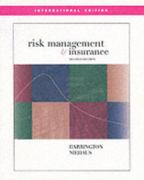

Below are a few questions on microeconomics, try and provide solutions for these
There are three periods, t = 0, 1,2. In t = 1 Mary maximizes her utility over leisure and consumption given the following function: UI(M, CI) = NICE subject to the following budget constraint: Ci + wiN = 24w1 where wi = 10. Note the price of the consumption good is assumed to be one in all periods. After she has made this decision, in t = 2 she maximizes this utility function: U2(N2, C2) = Nici subject to the following budget constraint: C2 + w2 N2 = 24w2 where w2 = 20. (a) (6 points) For t = 1, 2 calculate Mary's choice of leisure and consumption in each period. (b) (6 points ) For t = 1, provide economic intuition for the income and substitution effects of a wage increase on leisure. Can you say anything about the relative magnitudes of these income and substitution effects? (c) (7 points) Go back to your solution in part (a). If the interest rate is 10% per period, what is the present value of her consumption in t = 0? Please use 0.9 and 0.8 as approximations for 1/(1.1) and 1/(1.1) respectively. (d) (7 points) Mary now has the option of obtaining additional job training in t = 0 at an investment cost of $200. As a result, her wage rate increases in t = 1 to wj = 20 and in t = 2 to w2 = 30. Calculate the net present value of this investment on consumption. Consider only the value of consumption (and not the value of leisure). (e) (7 points ) For more general utility functions, when will the net present value of the investment on consumption from part (d) likely be negative? Use income and substi tution effects in your explanation. (f) (7 points) Does Mary have a Laffer curve for income taxes (as opposed to consumption taxes)?Alice has A dollars and has a constant absolute risk aversion a (i.e. u (r) = =e "?) for some a > 0. With some probability # 6 (0, 1) she may get sick, in which case she would need to spend L dollars on her health. There is a health-insurance policy that fully covers her health care expenses in case of sickness and costs P to her. (If she buys the policy, she needs to pay P regardless of whether she gets sick.) (a) Find the set of prices P that she is willing to pay for the policy. How does the maximum price P she is willing to pay varies with the parameters M. L. o, and a? (b) Suppose now that there is a test te {-1, + 1} that she can take before she makes her decision on buying the insurance policy. If she takes the test and the test t is positive, her posterior probability of getting sick jumps to * * > * and if the test is negative, then her posterior probability of getting sick becomes 0. What is the maximum price c she is willing to pay in order to take the test? Take P " (E) >0 > > > u (D). Find the condition under which she takes the test. (b) (4 minutes) Calculate consumer and producer surplus under trade. (5) (15 minutes) The US government is unhappy with steel imports and decides to impose a 200 percent tariff on imported steel so that the price of imported steel is now 3 when importing from abroad. (Continue to assume that the US domestic steel market operates in perfect competition with production function S(L) = ;1) (a) (2 minutes) What is the price of domestic steel? Will car manufacturers choose to use domestic or foreign steel? (b) (5 minutes) Calculate the new equilibrium in the US market for cars, continuing to assume that cars are traded freely at a world price of 100. Does the US still export cars?











